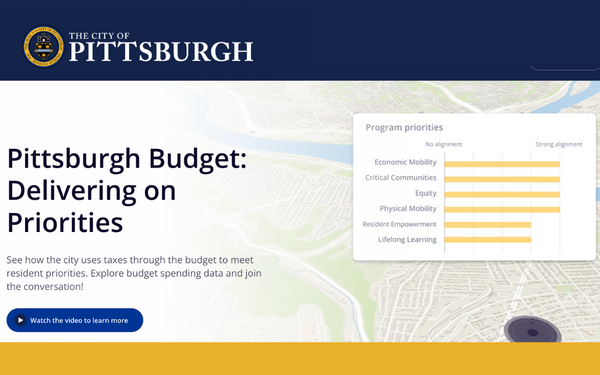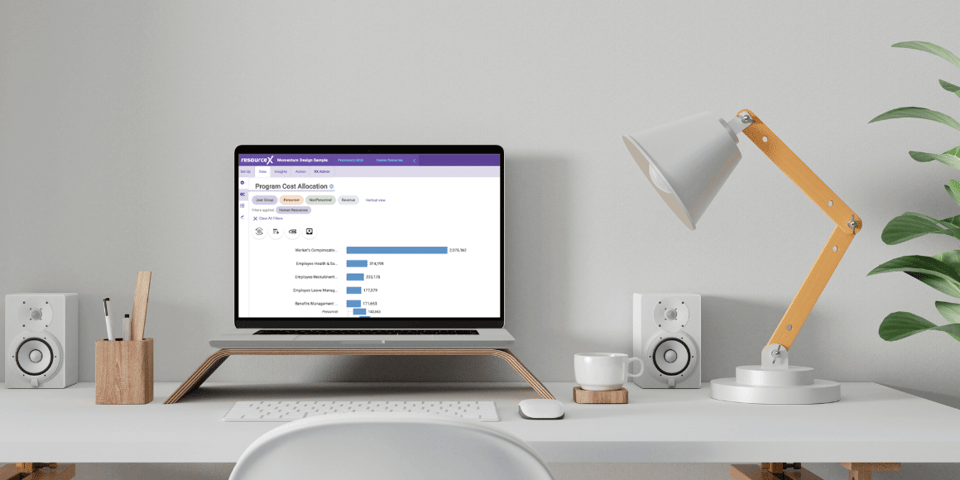For local governments to operate efficiently and with the best interests of the residents in mind, leadership needs to keep a finger on the pulse of the community. Priority-based budgeting is one way governments can improve community-level decision-making. However, even in today’s highly connected world, getting feedback from the public to set policies and align services with needs is challenging.
Let’s explore how city leaders use priority-based budgeting to discover what is most important to residents and allocate funding to support the necessary programs and services.

How to Use Priority-Based Budgeting to Improve Community-Level Decision-Making
Traditional line-item budgeting is integral in most local government accounting structures. However, as community needs become more complex, many leaders are adding programmatic and priority-based budgeting strategies to align budgets with needs and increase transparency into how public funds are used.
Here are a few ways local governments apply priority-based budgeting to make decisions at the community level instead of at the department or organization level.
Use data to drive decision-making.
Unlike traditional line-item budgets, priority-based budgeting tracks data at the program level, which helps identify the value and the costs of a program or service. This data provides irrefutable insight into which programs are working and which are not.
For example, a 2021 study by Deloitte found that within the What Works Cities network, applying data to decision-making had significant results, including:
- Better success using data to engage residents (90%)
- Improved emergency response times (60%)
- Improved neighborhood safety (49%)
- Reduced waste, reduced emissions, or improved air or water quality (37%)
Government budgeting software, like ResourceX’s platform, makes it easy for governments to identify inefficiencies across departments and align funding with community needs. This technology provides budget teams with a broad range of benefits, including:
- Reporting and analysis
- Planning and forecasting
- Budget development and deployment
- Access and version control
- Compliance and audit support
Make budgeting decisions transparent and visible.
Priority-based budgeting provides transparency into why resources are allocated a specific way and how those allocations align with the community's vision. This gives residents more confidence in government spending and keeps leadership accountable.
Leadership can keep residents looped into local budgeting issues by publishing regular updates online. However, these updates must be easy for the average user to locate and access.
Data visualizations, like charts, graphs, and infographics, are another great way to show residents how community input directly impacts fund allocation and the resulting outcomes, building trust that the residents’ concerns are being heard.
Connect with residents and stakeholders.
Although it’s not normally included in most priority-based budgeting technology, community engagement plays an essential role in the successful implementation of government budgets. However, it can be challenging to gather feedback.
There are several ways government representatives can reach out to the public to find out what matters to them:
Community Events
Scheduling information sessions and public forums to discuss issues and solicit feedback from residents is the most direct method to reach out to the community. Unfortunately, these events are not always well attended, so you shouldn’t rely on this as the sole opportunity to gather community input.
Surveys and Technology
Partnering with an organization that can coordinate surveys or set up an online forum for residents to submit questions and concerns is a highly effective way to discover what residents think about local issues, projects, and priorities.
You may also consider creating an online group for community leaders and changemakers to solicit ongoing input and keep communication between the community and the government flowing.
These resources will help decision makers understand the value of a broad base of residents and stakeholders and remain aware of emerging challenges and concerns.
Gamification
Making the feedback process fun for residents encourages them to participate and share their thoughts on what the community needs. Duluth, MN, provides an excellent example of gamifying public information gathering to drive priority-based budgeting.
The city’s budget manager and the chief financial officer (CFO) took to the streets of Duluth with a creative way to discover where residents felt tax dollars were best spent. Participants were given ten coins valued at $100 each in priority-based budgeting money. They were then asked to allocate those coins to the programs and services they thought were most important to Duluth.
Eventually, the game launched online, allowing participants to allocate $1,000 to six identified priorities. Within ten days, more than 800 residents weighed in on their top priorities for government spending.
Priority-Based Budgeting in Action
Now, let’s look at these priority-based budgeting strategies at work in real communities.
Data-Driven Decision Making
Over two years, City A has increased resource allocation to programs “most aligned” with their priorities by over $14 million while reducing investments in programs “least aligned” with their priorities by $4.4 million.
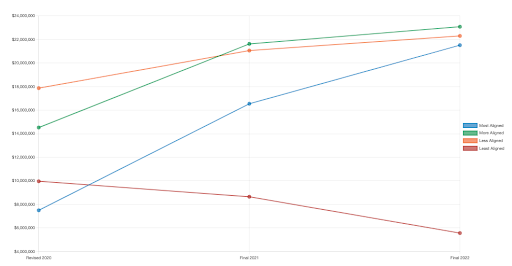
Increased Transparency
City D uses data visualization to demonstrate how much of the budget contributes to the priorities that are important to their community. Within each priority, the data also shows how those resources align with overall city priorities, from no alignment to “extreme” alignment.
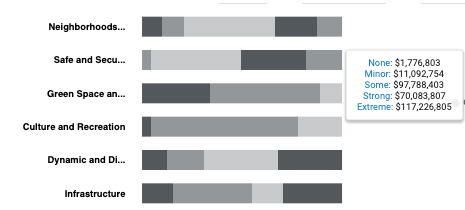
Communication with community
City P’s data demonstrates that almost half of its general fund operating budget is highly aligned with the priorities that are important to the community.
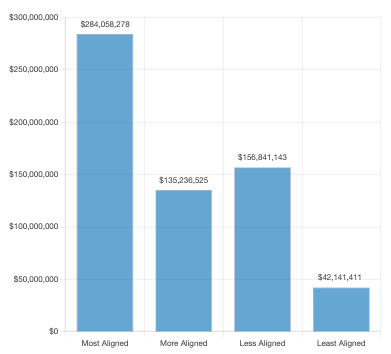
Empower Community-Level Decision-Making with Priority-Based Budgeting
Community engagement is an essential factor in priority-based budgeting. Although it can be challenging, collecting input from residents about the programs and services that matter most to them will ensure fund allocation aligns with priorities to create a strong community.
Download the ResourceX “2022 Annual Impact Report” to learn how real local governments use priority-based budgeting and technology to drive change within their communities.





